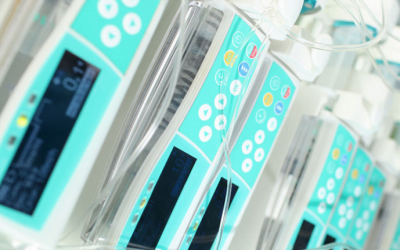Now that we are fully engrossed in the cyber age, there are rapid advances across the board for all things connected to the Internet and IoT medical devices cyber security is no exception. These devices, often called “The Internet of Things,” or IoT, has certainly made much of life much easier. For the medical profession, it has certainly become a simple, safe and easy way to monitor patients away from a clinical setting.
This is all fine and good, but there is a fundamental question of IoT that needs answering: Are these safe and secure when away from a closed environment? This article is going to address the issues home devices face and possible ways to prevent cyber attacks and/or hacking.
Dispensing for IoT Medical Devices Cyber Security
The number one concern of healthcare professionals looking at and addressing potential problems is the HIPAA. This protection act of 1996 means patients under the care of physicians have a reasonable expectation of privacy and are protected under a patient/medical professional relationship. IoT’s are free from human intervention by and large.
This means the patient carrying the device is completely removed from interacting with it on any level. Most of the IoT medical devices are used strictly for monitoring, data collection and medical dispensing. They are passive because the medical professionals are looking for a true a baseline as possible and is only effective when the patient is at ease with or completely unaware of the device. This lack of concern in cyber security for medical devices is the problem.
ISSUES AT STAKE
The information transmitted, no matter how insignificant at the time, could be used to gain identity information. The IoT’s are often coded to the patient with a name, number and medical coding information. All that would be needed is access to the information on the device, and personal, private information is available. This includes social security numbers, medical information and possible fiscal information to boot. This compromised information is enough to wreak havoc on a medical practice, hospital or medical equipment distributor – if not all of them in conjunction – all because of a HIPAA violation.
Solutions for IoT Medical Devices Cyber Security
While computers have software to keep them from attacks, these medical devices do not. There is scant little that can be done if malfeasance is intended. A skilled and determined computer hacking specialist with the understanding of IoT’s can quickly and easily undermine its basics. Doing so would cause serious issue with the medical professional monitoring the patient and for the patient, who could, as a result, receive incorrect treatments and/or medications. Unable to track the information back to a source, this could potentially open a flood of medical malpractice suits, and there would be little the medical professional could provide as a substantial defense.
POTENTIAL SOLUTIONS
Medical administration in conjunction with information teams and network security specialists should realize there needs to be a move from the “Internet of Things” to “Security of Things” to protect themselves, their practices and patients from hacking. There are a few things that could be considered.
DATA ENCRYPTION
Safe and secure encryption should be on the forefront. As more and more medical practices move from paper to online and cloud patient records, the same can be said for IoT’s. Signed contracts with network encryption professionals about software and the devices themselves should be a first step. Each contract to include audits, verifications and regular testing to ensure the validity and security of the data on the IoT.
AUTHORIZED DEVICES
A Holter monitor is one of these IoT’s. Its purpose is to collect a 24 hour EKG for cardiac patients in various settings for the best possible heart function in normal settings. The contract should provide for each device to collect only the necessary information and nothing more. Systems that download, read or output the information is additionally a part of the contract.
To address needed IoT medical devices cyber security, the device should be built in a such a way that any tampering of any sort is quickly noticed and/or built in such a way that the device immediately informs the medical professionals. Patient contracts protecting the device is also a sound idea.
The physical security of the device itself also should not be overlooked. The device should be configured to prevent data storage media from being accessed or removed, and the device itself should not be easily disassembled. In short, building a strong security to protect data during transmission is undercut if the data can be removed from the device itself.
CREDENTIALS
No one but a medical professional can dispense medical advice, so only those who will be reading the results need access to the data contained thereon. All information should only be retrieved under a secure server under select passwords. Focusing on cyber security for IoT medical devices, only the absolutely necessary individuals outside of those interpreting the data need access to any element of the entire procedure.
PERSONNEL
 Proper training for every step only makes sense. All medical professionals are bound under an ethics code with severe penalties for infringement. There have not yet been any serious attacks on medical IoT’s.
Proper training for every step only makes sense. All medical professionals are bound under an ethics code with severe penalties for infringement. There have not yet been any serious attacks on medical IoT’s.
When will it happen is the question. Ideally, every possible step should be covered; however, there is no guarantee of anything until an attack.
What are your thoughts and opinions on the issue of IoT medical devices cyber security, and what steps in addition to those mentioned would be a necessary part?








